
Columnar Sweetgum Tree: The Ultimate Guide to Planting, Care, and Maintenance for Your Garden
Looking to transform your garden with a tree that offers year-round beauty without taking up too much space? 🌳 The columnar sweetgum tree might be just what you need! This narrow, fast-growing tree is perfect for small yards or urban landscapes, providing vibrant autumn colors and stunning foliage all year long. But how do you plant, care for, and maintain this tree to ensure it thrives? 🤔
If you’re a beginner gardener or someone with limited space, you might feel overwhelmed by the thought of caring for a tree. You’re not alone! Many people struggle with choosing the right trees for small spaces or maintaining them properly. That’s why we’ve created this comprehensive guide to help you navigate the planting and upkeep of your very own columnar sweetgum tree. Whether you’re a seasoned gardener or just getting started, you’ll find practical tips that ensure success from the first planting to long-term care.
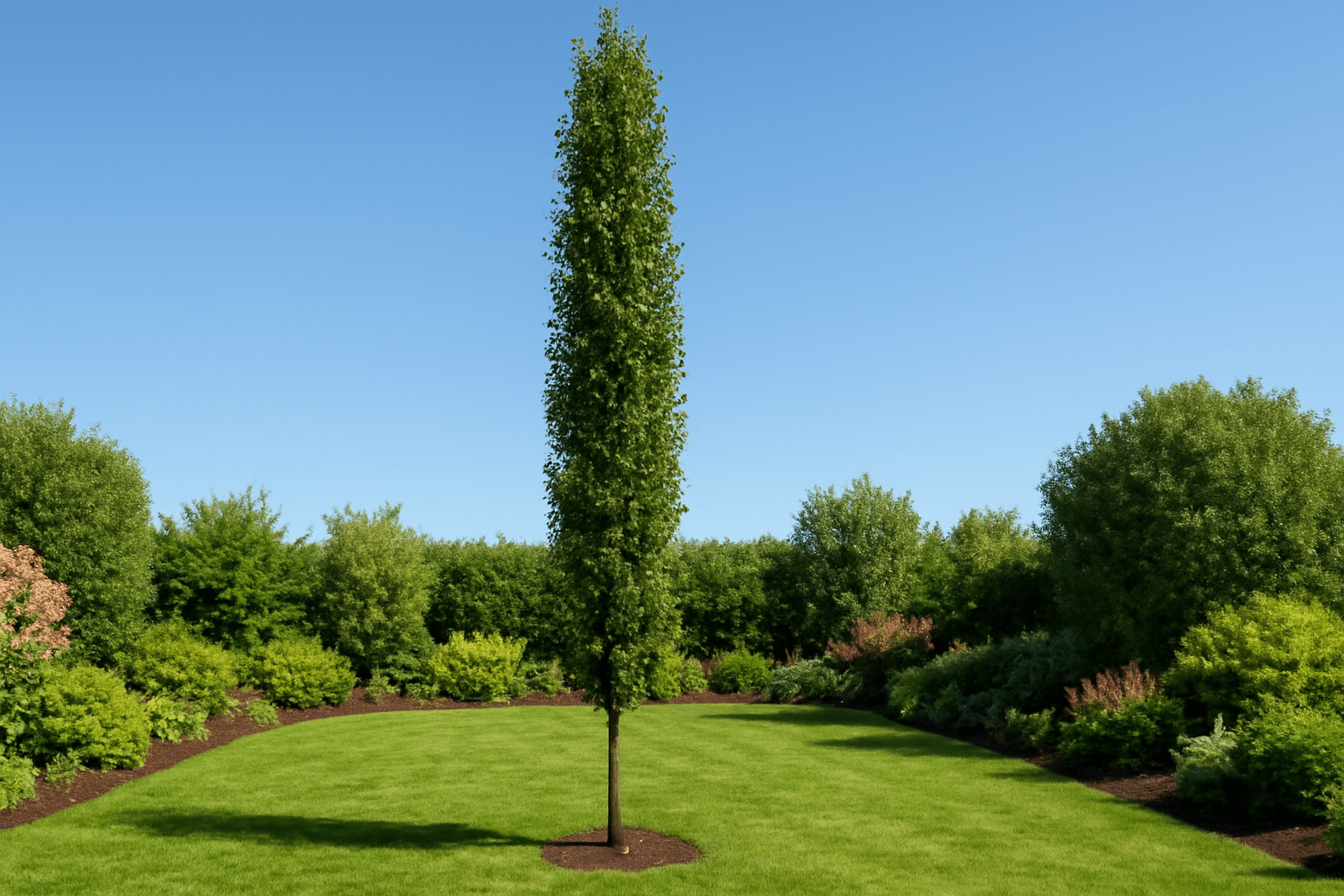
Ready to turn your garden into a beautiful, low-maintenance paradise? Keep reading to discover everything you need to know about the columnar sweetgum tree! 🌿
Table of Contents
Toggle🏡💚 Why Choose a Columnar Sweetgum Tree for Your Garden? 💚🏡
If you’re looking to add a tree to your garden that combines beauty, practicality, and low maintenance, the columnar sweetgum tree is a fantastic choice! Here’s why:
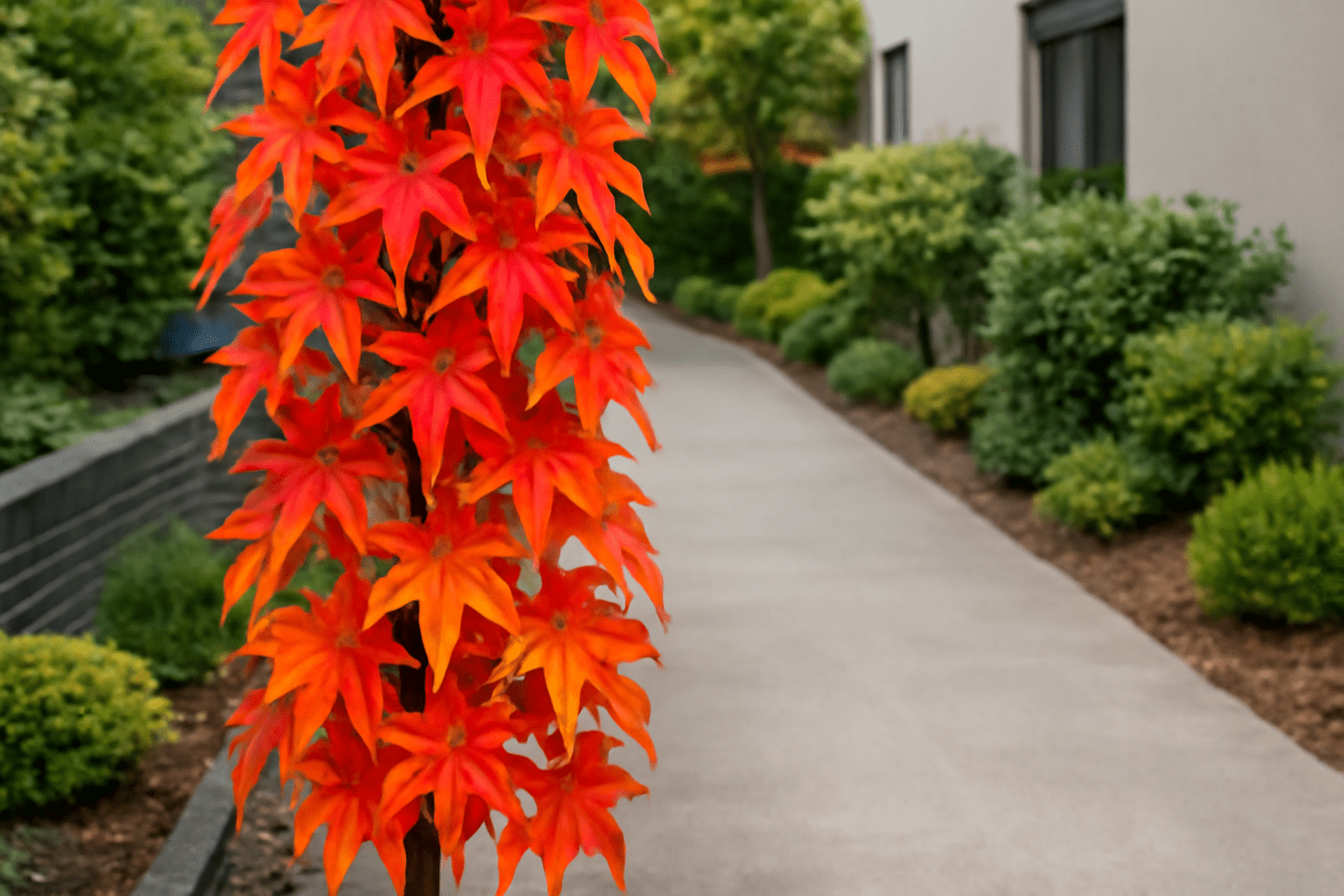
🌟 Perfect for Small Spaces 🌟
The columnar sweetgum tree is known for its narrow, upright shape, making it ideal for gardens where space is limited. Whether you’re working with a small yard, a narrow driveway, or even an urban garden, this tree fits perfectly into tight spots without overwhelming your space. Unlike traditional wide trees, it grows tall but remains slim, giving your garden a sleek, modern look. 🌳✨
🍂 Stunning Fall Colors 🍂
One of the highlights of this tree is its vibrant autumn display. As the weather cools, the columnar sweetgum tree transforms into a masterpiece of reds, oranges, and yellows. It’s an easy way to inject some color and life into your landscape, especially during the fall months when many other plants start to fade. 😍🍁
🌿 Minimal Maintenance 🌿
Unlike other trees that require constant attention, the columnar sweetgum is relatively low maintenance. It’s hardy, adaptable to different soil types, and resistant to most pests and diseases. Once established, it doesn’t demand a lot of care—making it perfect for busy gardeners or anyone looking to reduce maintenance work. 🧑🌾💪
🌍 Environmental Benefits 🌍
Columnar sweetgum trees don’t just look good—they also contribute to the environment. By providing shade, they help cool down your home, which can lower your energy bills in the summer. Plus, they support local wildlife, offering shelter and food for birds and insects. 🐦🌳
🎯 Year-Round Interest 🎯
Not only does the columnar sweetgum tree offer beauty in autumn, but its glossy, star-shaped leaves stay vibrant throughout the spring and summer. In winter, its distinct shape adds a touch of elegance to any garden, making it a tree that provides year-round interest. 🌞❄️
Whether you’re looking to enhance your garden’s aesthetic or reduce long-term maintenance, the columnar sweetgum tree delivers on both fronts. Keep reading to discover how to plant, care for, and enjoy this beautiful tree for years to come! 🌱💚
🌞🌱 Ideal Growing Conditions for Columnar Sweetgum Trees 🌱🌞
To help your columnar sweetgum tree thrive, it’s essential to plant it in the right environment. Understanding the tree’s ideal growing conditions will ensure you get the best results, with healthy growth and vibrant foliage year after year. Let’s break it down:
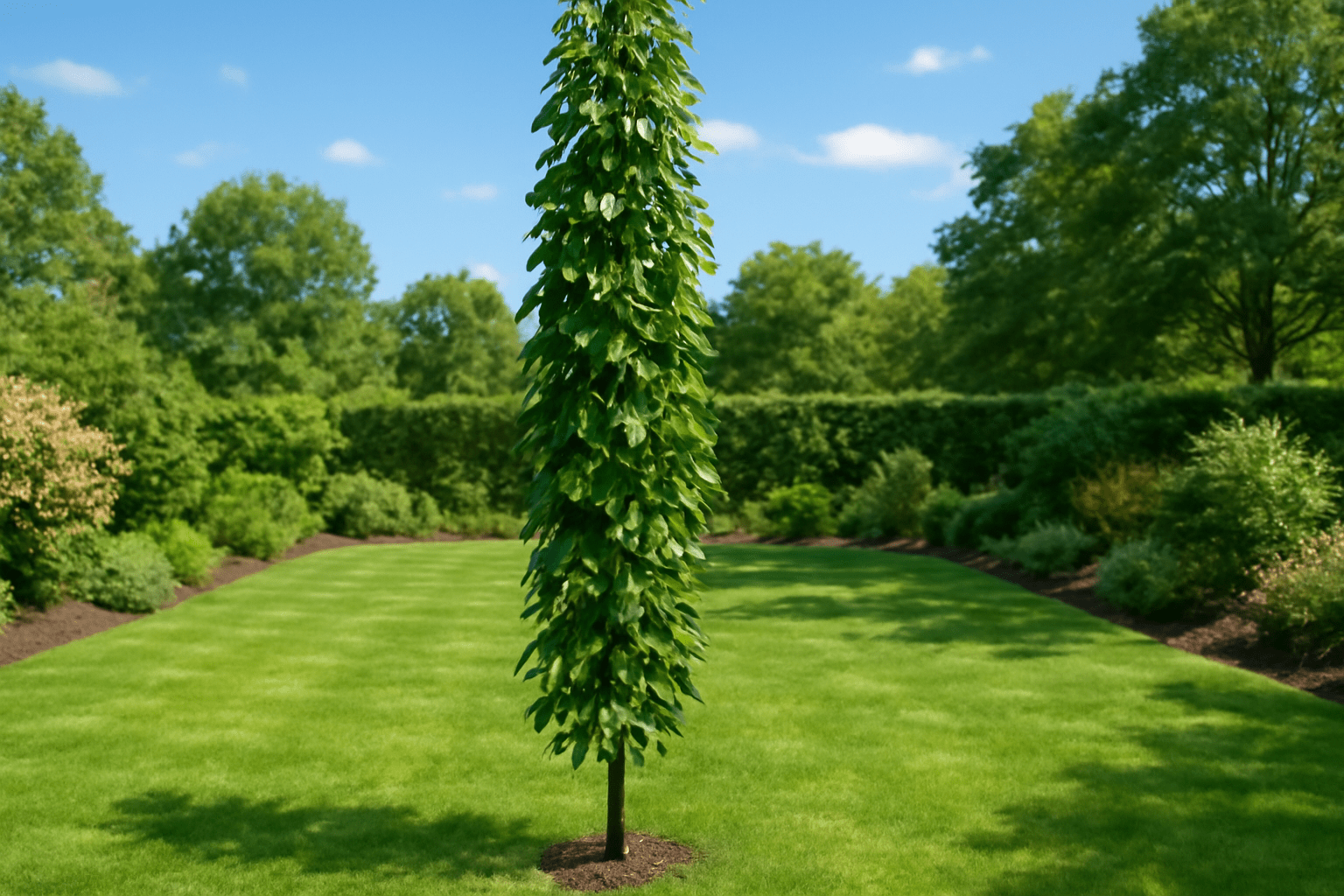
🌞 Sunlight and Location 🌞
The columnar sweetgum tree loves the sun! For optimal growth, it requires full sun to partial shade. This means it should be planted in a location where it can receive at least 6 hours of direct sunlight each day. While it can tolerate some shade, especially during the hottest part of the day, the tree will flourish and produce more vibrant fall colors when it’s basking in sunlight. Ideal planting spots include yards, parks, and streetscapes, where it can access plenty of sunlight without being overcrowded by other plants. 🌞🌳
🌿 Soil Requirements 🌿
Columnar sweetgum trees are adaptable to various soil types, but they perform best in well-draining soil that is slightly acidic to neutral. The optimal soil pH range for these trees is between 6.0 and 7.0. Good drainage is crucial because waterlogged soil can lead to root rot. Before planting, make sure the soil is loose enough to allow water to flow freely, preventing the roots from becoming saturated. If your soil is clay-heavy, consider adding organic matter to improve drainage. 🌱🌍
💧 Watering Needs 💧
Watering is a key factor in ensuring the success of your columnar sweetgum tree. While it’s a relatively low-maintenance tree, proper watering is still important—especially during the first few years after planting. Deep, infrequent watering is best, as it encourages the roots to grow deep into the soil. Water the tree thoroughly once a week, and increase the frequency during dry spells or extremely hot weather. Make sure the water reaches deep into the soil to establish strong roots, which will help the tree become more drought-tolerant as it matures. 💦🌳
🌡️ Climate Considerations 🌡️
The columnar sweetgum tree is suited for USDA hardiness zones 5-9. This means it can thrive in regions with cold winters and warm summers, but it’s not ideal for areas with extreme cold or heat. If you live in one of these zones, you’re in luck—your climate is perfect for growing a healthy and vibrant columnar sweetgum tree. The tree will perform well through all four seasons, adapting to the weather changes in these zones. 🌍🌞❄️
Key Takeaways:
- Sunlight: Plant in full sun to partial shade for vibrant growth.
- Soil: Well-draining, slightly acidic to neutral soil (pH 6.0–7.0) is best.
- Watering: Deep, infrequent watering encourages strong root development.
- Climate: Ideal for USDA hardiness zones 5-9.
By ensuring your columnar sweetgum tree has the right environment, you’ll set it up for long-term success and enjoy its beauty for years to come! 🌳💧
🌳🌱 How to Plant Your Columnar Sweetgum Tree 🌱🌳
Planting your columnar sweetgum tree is the first step towards creating a stunning, low-maintenance garden centerpiece. By following these simple steps and tips, you’ll ensure the tree gets a strong start, setting it up for healthy growth in the years to come.
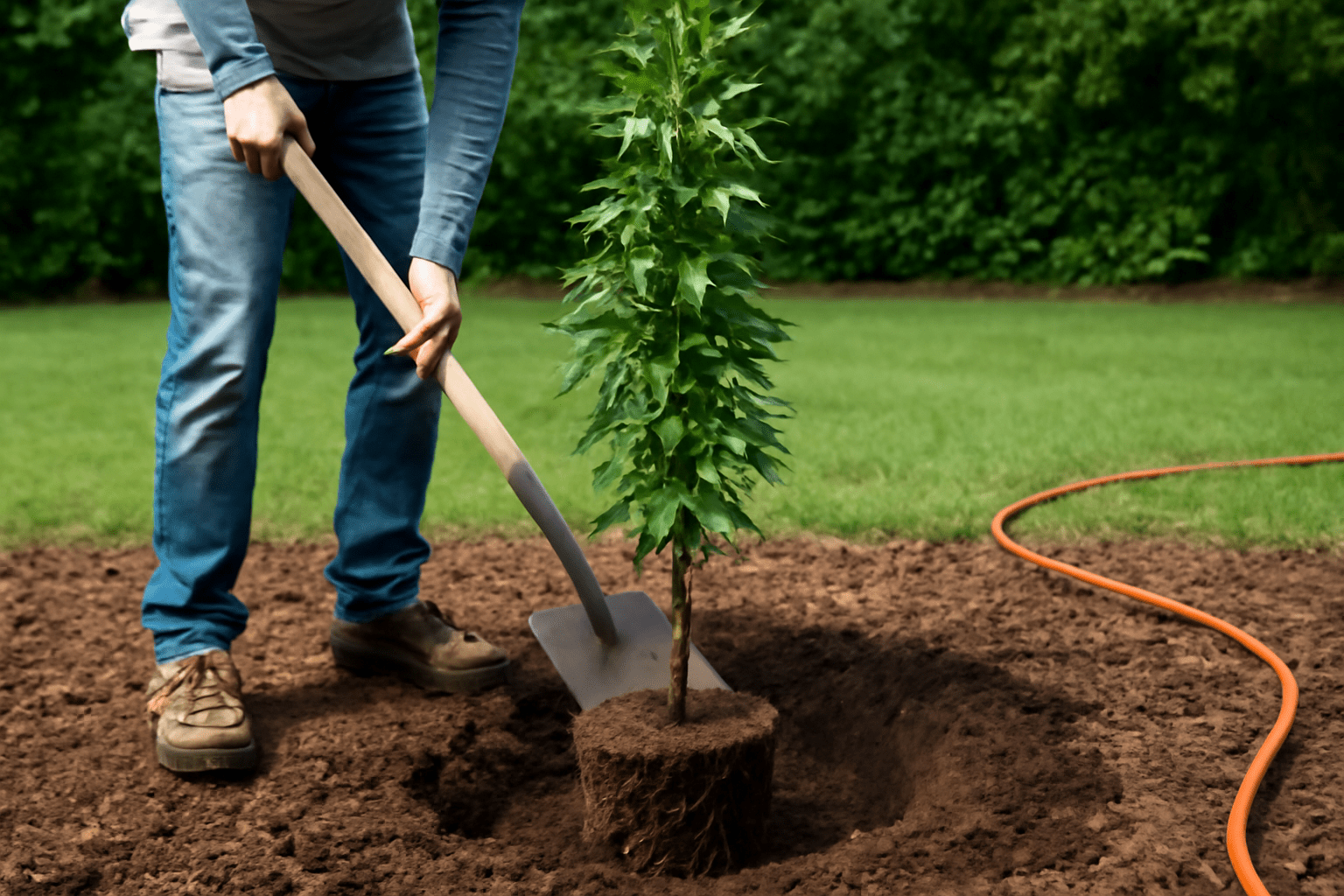
🌸 When to Plant: Optimal Planting Times 🌸
The best times to plant your columnar sweetgum tree are fall or early spring. During these seasons, the weather is mild, and the soil is moist, which helps the roots establish before the stress of summer heat or winter cold. Fall planting gives the tree time to establish itself over the winter, while early spring planting ensures it’s ready to grow once the warmer weather arrives. 🍂🌞
🌱 Choosing the Right Tree 🌱
When selecting a sapling from a nursery, look for one that has:
- Strong, straight trunks: Avoid trees with bends or damage to the trunk.
- Healthy leaves: The leaves should be green (not yellow or brown) and free from spots or holes, indicating a healthy tree.
- Well-developed roots: Check that the roots are not pot-bound or excessively tangled, as this can hinder growth.
Choosing a healthy sapling will give your columnar sweetgum tree the best chance for a successful start! 🌿🌳
🔨 Step-by-Step Planting Guide 🔨
Follow these steps for planting your tree to ensure it thrives:
- Choose a sunny spot: Find a location that receives at least 6 hours of direct sunlight per day for optimal growth. This will ensure the tree gets the light it needs for strong growth and vibrant colors. 🌞
- Dig a hole 2-3 times wider than the root ball: This will give the roots plenty of space to spread out and establish themselves. The hole should be just as deep as the root ball, so the top of the roots is level with the surrounding soil.
- Position the tree: Place your columnar sweetgum tree gently in the hole, making sure it’s standing straight. Position it so that the roots are spread out evenly and not curled or overcrowded.
- Fill in with soil: Backfill the hole with the soil you dug up, ensuring the tree is secure and the soil is well-packed. If you’ve added any soil amendments (like compost), mix them well with the native soil. 🌱
- Water thoroughly: After planting, water the tree deeply to settle the soil around the roots and eliminate any air pockets. This ensures that the roots make good contact with the soil. 💧
- Add mulch: Add a 2-3 inch layer of mulch around the base of the tree. This will help retain moisture, regulate soil temperature, and reduce the growth of weeds. Keep the mulch away from the trunk to prevent rot.
📏 Additional Tips for Success 📏
- Space the trees 15-20 feet apart for optimal growth and airflow.
- Protect young trees from wind or animals: If you live in an area with strong winds or wildlife, consider using a tree guard or stake to protect your sapling during its early years.
By following these simple steps and spacing tips, you’ll set your columnar sweetgum tree up for a healthy, thriving future in your garden! 🌳🌻
🌳🌿 Caring for Your Columnar Sweetgum Tree 🌿🌳
Once your columnar sweetgum tree is planted, regular care will ensure it grows strong, healthy, and beautiful. Below are some simple yet effective tips for pruning, fertilizing, watering, and mulching to keep your tree in top shape!

✂️ Pruning and Shaping ✂️
Pruning is essential to maintain the tree’s neat, columnar shape and remove any dead or damaged branches that can interfere with its growth.
When to Prune: The best time to prune your columnar sweetgum tree is in late winter or early spring, before new growth begins. This minimizes stress on the tree and allows you to shape it while it’s still dormant. 🌱
How to Prune:
- Remove any dead, damaged, or diseased branches to promote healthy growth.
- If the tree begins to develop a wider canopy, prune any branches that grow outwards, keeping the shape narrow and column-like.
- Always use clean, sharp pruning tools to prevent any damage to the tree.
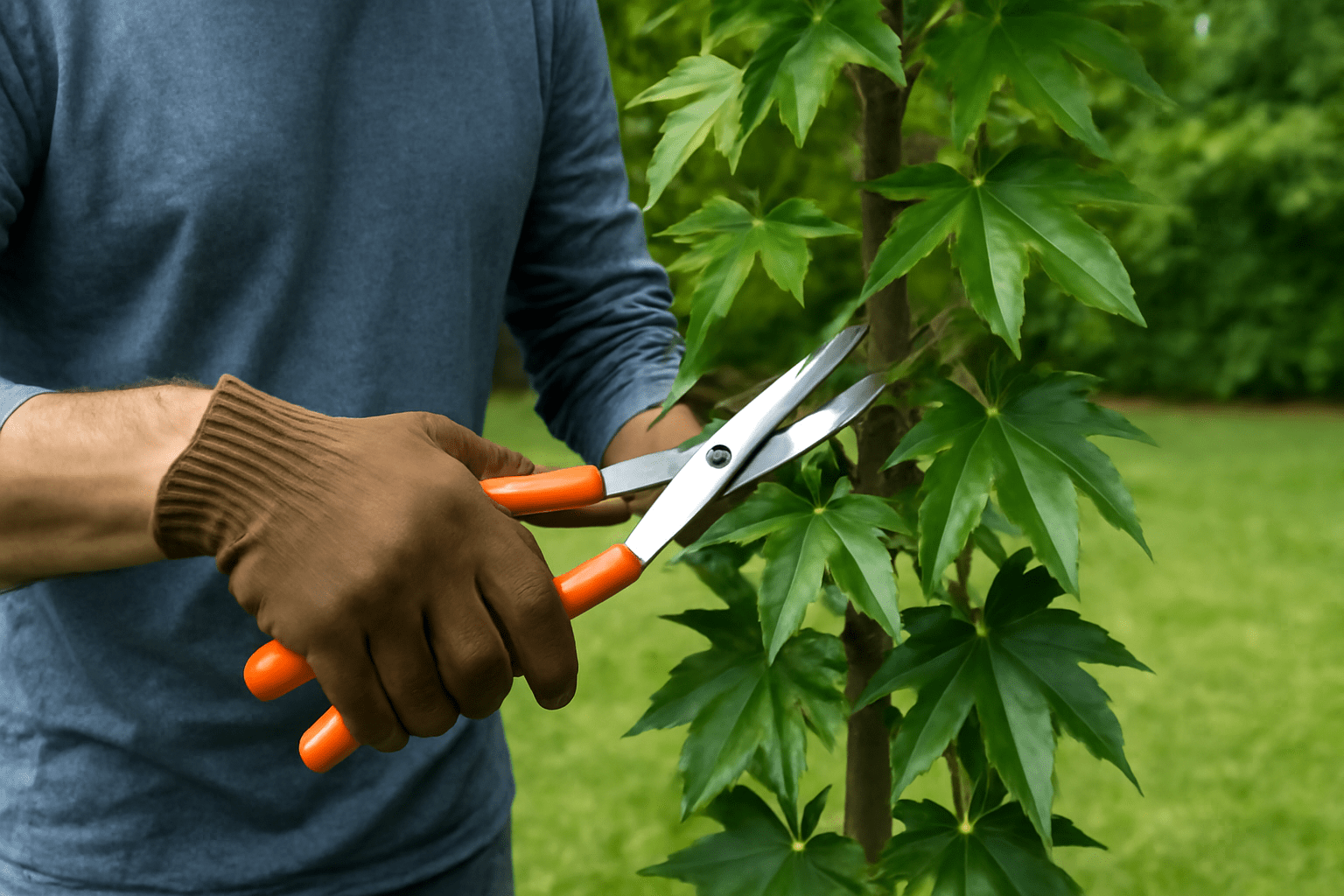
Pruning regularly helps maintain its streamlined shape and ensures air circulation through the branches, reducing the risk of pests and disease. 🌳✨
🌱 Fertilizing 🌱
Fertilizing your columnar sweetgum tree is an important step in supporting its growth, especially during the first few years.
When to Fertilize: Apply a balanced, slow-release fertilizer in early spring, just before the tree starts its new growth. This gives the tree a boost to start the growing season strong. 🌿
How Often to Fertilize: Fertilize once a year during the early spring for the first 3 years after planting. After that, you can cut back to every other year, depending on the tree’s growth.
What Type of Fertilizer to Use: Choose a fertilizer that has equal parts nitrogen, phosphorus, and potassium (e.g., 10-10-10) for balanced nutrition. Slow-release granules are ideal because they provide steady nourishment over time. 🌾
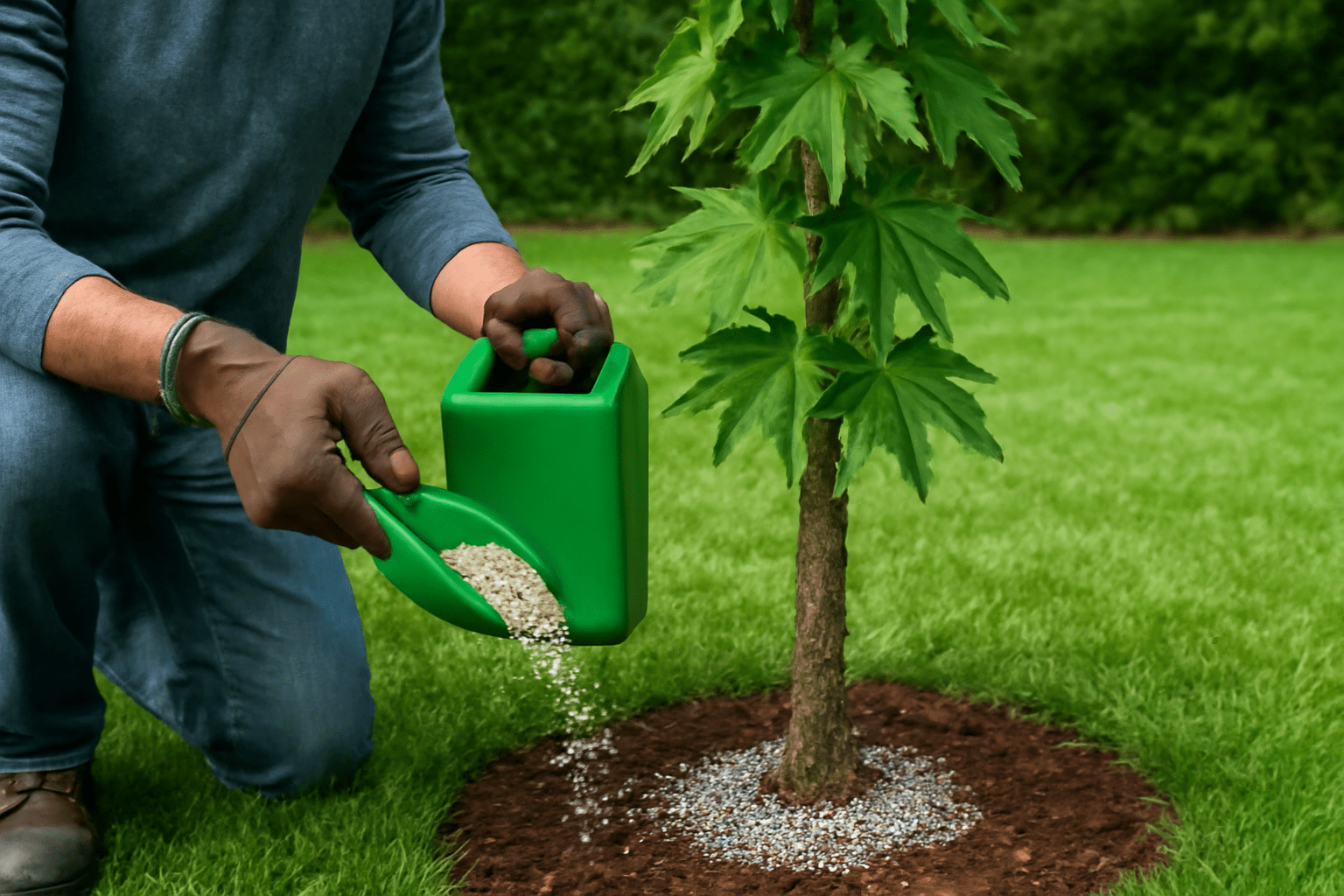
💧 Watering Schedule 💧
Your columnar sweetgum tree will need a bit more attention when it comes to watering, especially in the first few years.
How Often to Water: Deep, infrequent watering is best for this tree. Aim to water your tree once a week during dry spells or when the weather is particularly hot. 🌞💦
Watering Tips:
- Water deeply to encourage deep root growth. Shallow watering can cause the roots to stay near the surface, which makes the tree more vulnerable to drought.
- Be sure the water penetrates the soil down to the roots. Avoid watering too frequently, as this can lead to waterlogged soil and root rot.
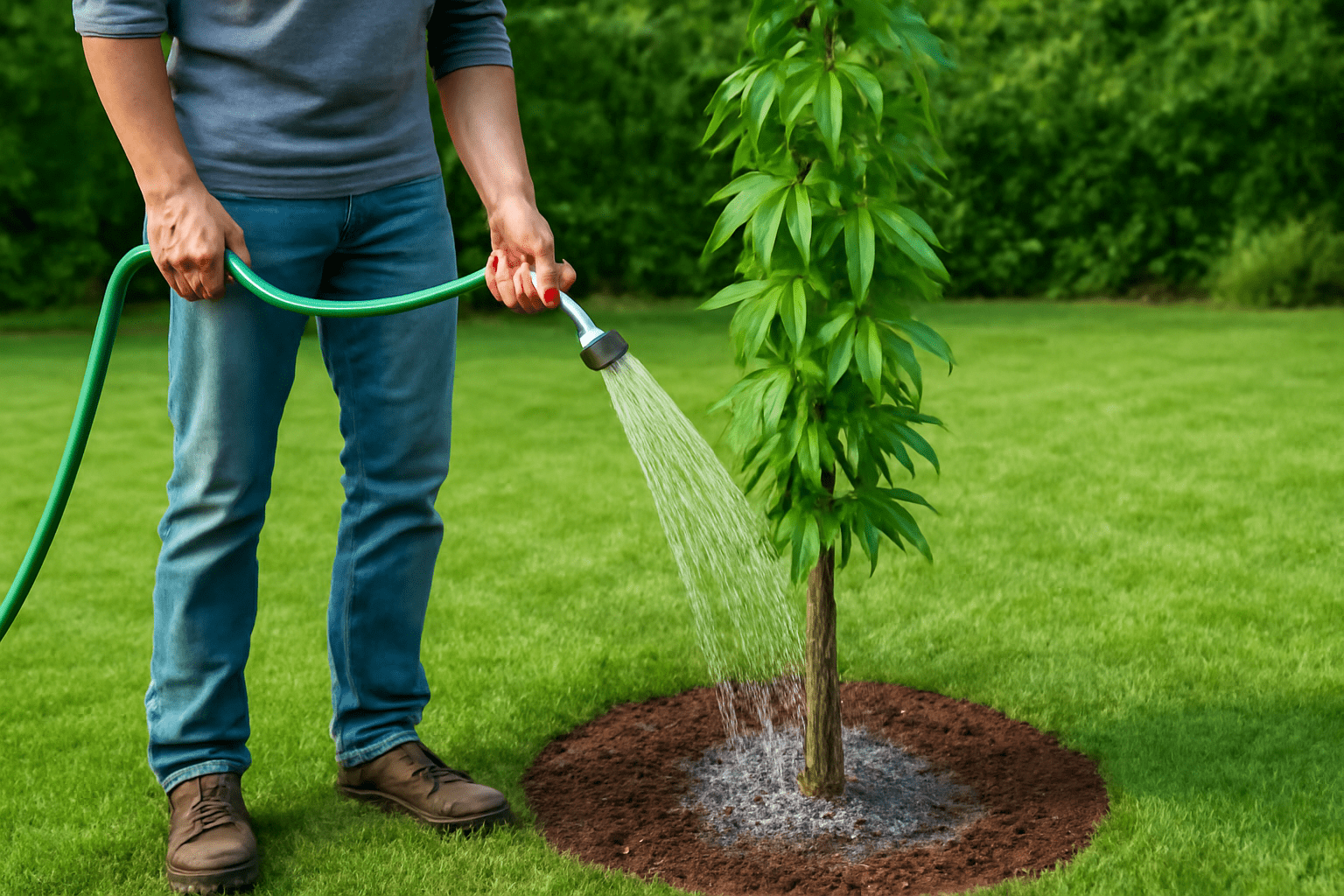
🍂 Mulching 🍂
Mulching plays a key role in protecting your columnar sweetgum tree, especially in hot summers or dry conditions.
Why Mulch: Mulch helps to keep the roots cool, retain moisture, and reduce weed growth around the base of the tree. This is especially important during the first few years when the tree is establishing itself.
How to Mulch: Apply a 2-3 inch layer of mulch around the base of the tree, but keep the mulch away from the trunk to prevent moisture buildup that could lead to rot. Use organic mulch like wood chips or bark to provide additional nutrients as it breaks down. 🍂🌿
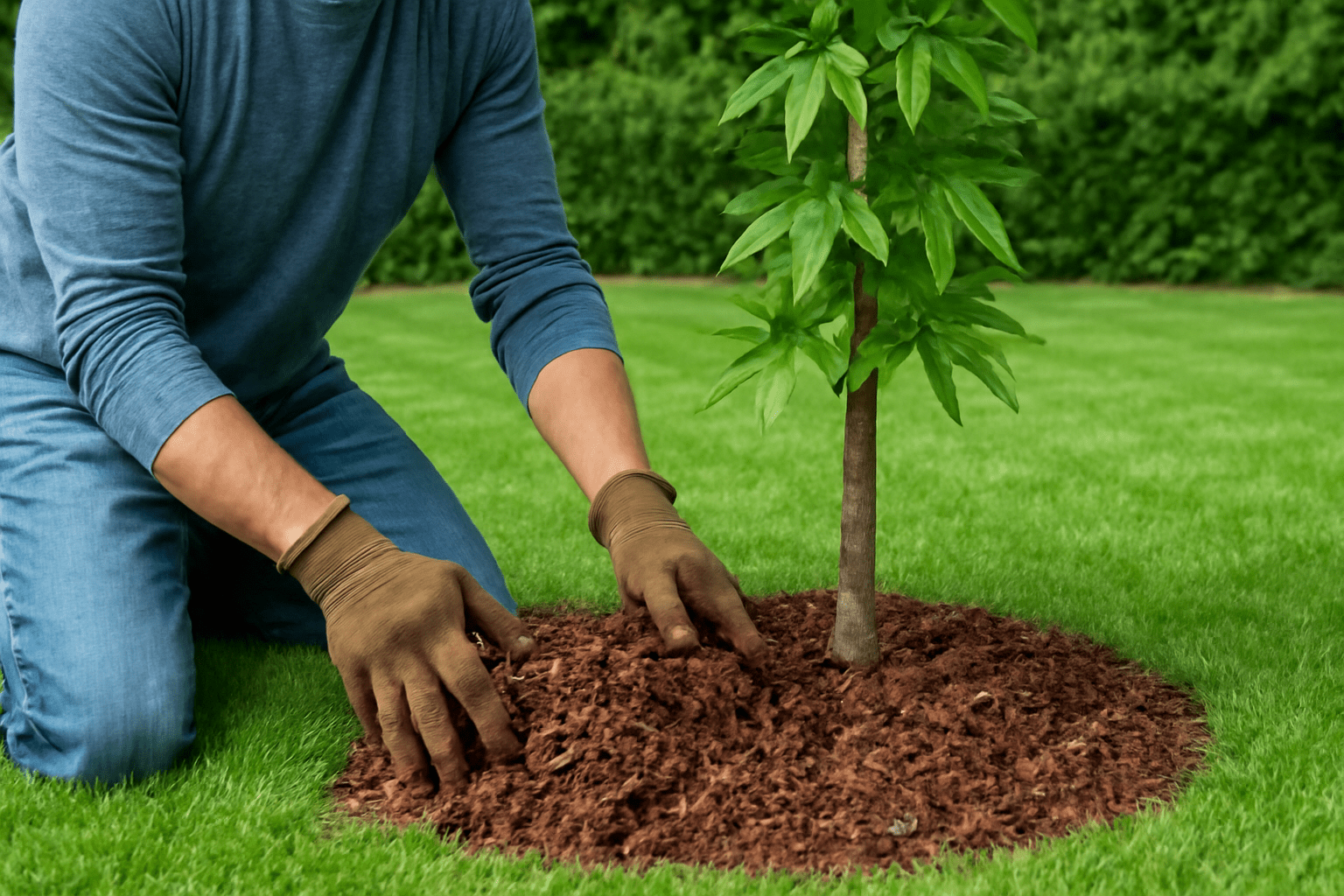
Key Takeaways:
- Prune in late winter or early spring to maintain shape and remove damaged branches.
- Fertilize in early spring with a balanced, slow-release fertilizer to boost growth.
- Water deeply and infrequently to promote healthy root growth, especially during dry spells.
- Mulch around the base to retain moisture and reduce weed growth, but avoid direct contact with the trunk.
By following these easy care tips, your columnar sweetgum tree will continue to thrive and bring beauty to your garden for years to come! 🌳💚
🌳🌿 Maintenance Tips for Long-Term Health 🌿🌳
Caring for your columnar sweetgum tree doesn’t stop after planting—regular maintenance throughout the year will help ensure its long-term health and vibrancy. Here’s a seasonal guide for keeping your tree in top shape and tips for monitoring its health throughout the year.
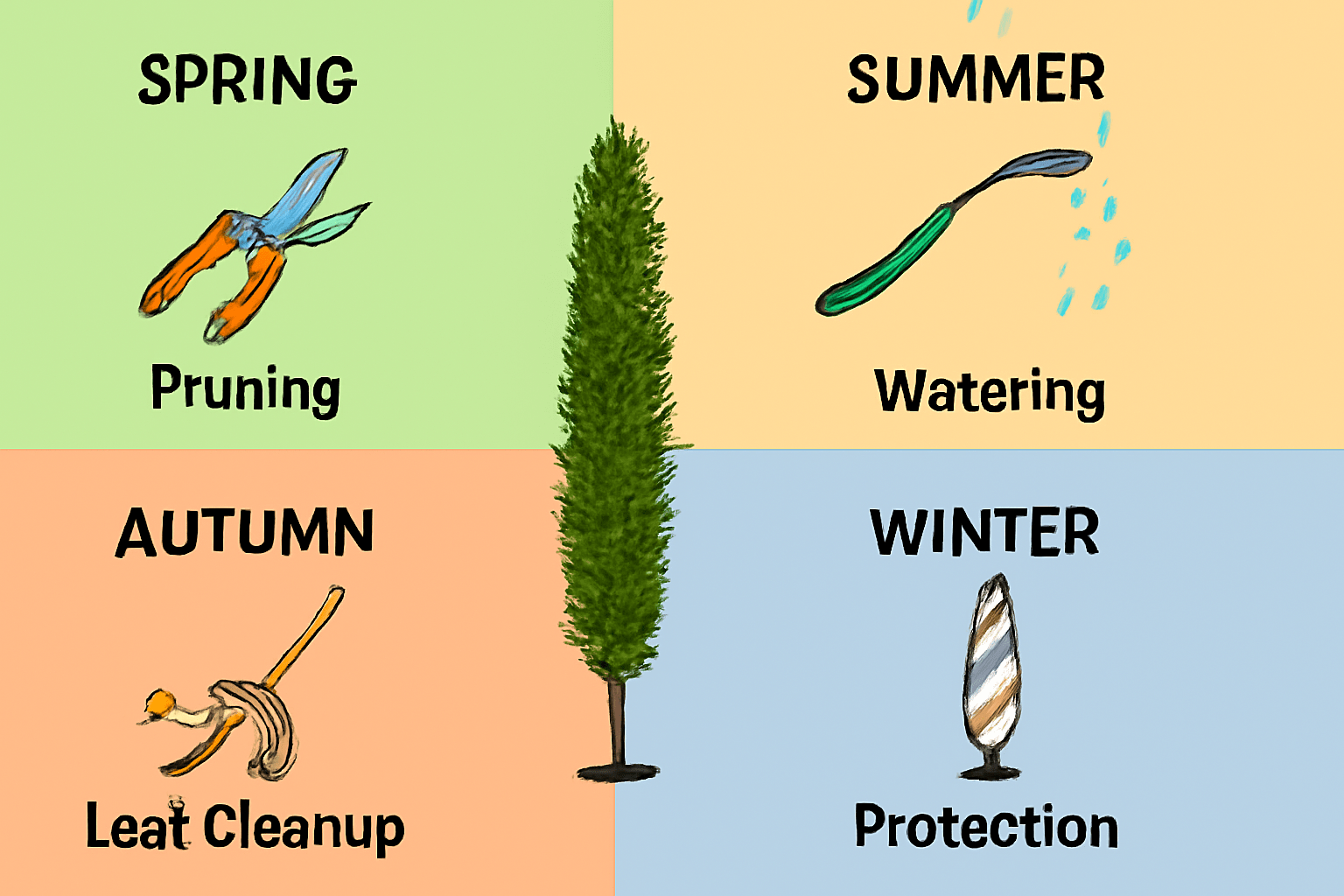
🌱 Seasonal Care: Basic Tasks for Each Season 🌱
- Spring Pruning:
As your tree emerges from dormancy, it’s a great time to prune away any dead or damaged branches and shape the tree if needed. Pruning in early spring before new growth begins encourages healthy, strong branches. This also allows the tree to start the growing season with a clean slate. ✂️🌿 - Summer Watering:
During the hot summer months, the tree may require extra attention to stay hydrated. Deep watering is essential during dry spells. Ensure the soil around the tree remains moist but not soggy. Check the soil regularly to maintain the correct moisture level, and water deeply once a week, or more often if the weather is particularly dry. 💧🌞 - Autumn Cleanup:
As the weather cools and leaves begin to fall, be sure to clean up fallen leaves from the base of the tree. This helps prevent fungal infections and keeps pests from nesting in the decaying leaves. Removing fallen debris also helps your tree maintain good airflow around the trunk and roots, reducing the risk of rot. 🍂🧹 - Winter Protection:
During winter, your columnar sweetgum tree may need some extra care to protect it from cold temperatures. If you live in a region with harsh winters, consider wrapping the trunk with tree wraps to prevent frost cracks. Ensure the tree has access to water during warm spells, and remove any heavy snow accumulation from the branches to prevent breakage. ❄️🌨️
👀 Monitoring Tree Health: Tips for Year-Round Observation 👀
- Check for Pests and Disease:
Regularly check your tree for signs of pests or disease. Early detection is key to managing issues before they become serious. Particularly in spring, look for insects like aphids, scale, or signs of fungal infections such as discolored leaves or unusual spots. If you spot any issues, take immediate action to treat them. 🐞🌿 - Observe Soil Moisture:
Keep a close eye on the soil moisture levels around the tree, adjusting your watering schedule as necessary. The tree’s needs may change depending on the season—during dry spells, you may need to water more frequently, while in rainy periods, you’ll need to ensure the soil doesn’t become waterlogged. 🌧️💧 - Leaf Color and Health:
Monitor the health of the tree’s leaves year-round. Look out for yellowing leaves, which can indicate nutrient deficiencies or overwatering, or premature leaf drop, which might signal stress from pests or environmental factors. Keeping a close eye on leaf health will help you address issues early. 🍃🔍 - Root Health:
If the tree shows signs of poor growth or yellowing leaves, check the soil around the roots for compactness or poor drainage. If necessary, aerate the soil or amend it to improve root health. Healthy roots are crucial for long-term tree health! 🌱🪴
Key Takeaways:
- Spring: Prune dead branches and shape the tree for healthy growth.
- Summer: Deeply water the tree, especially during dry spells.
- Autumn: Clean up fallen leaves to prevent fungal infections and pests.
- Winter: Protect your tree from frost and snow accumulation.
- Year-Round: Regularly check for pests, monitor soil moisture, and maintain healthy roots.
By performing these simple maintenance tasks and monitoring your tree’s health throughout the year, your columnar sweetgum tree will stay vibrant and healthy for years to come! 🌳🌿
🌟 Final Thoughts 🌟
The columnar sweetgum tree is an outstanding choice for gardeners seeking a beautiful, low-maintenance tree that thrives in small spaces. With its stunning fall colors, unique columnar shape, and ability to adapt to various environments, it’s a tree that can add beauty and value to your garden for years to come.
By following the simple care tips outlined in this guide—planting in the right spot, providing seasonal care, monitoring for pests and diseases, and maintaining proper watering and soil conditions—you can ensure your columnar sweetgum tree grows strong, healthy, and resilient. 🌳💚
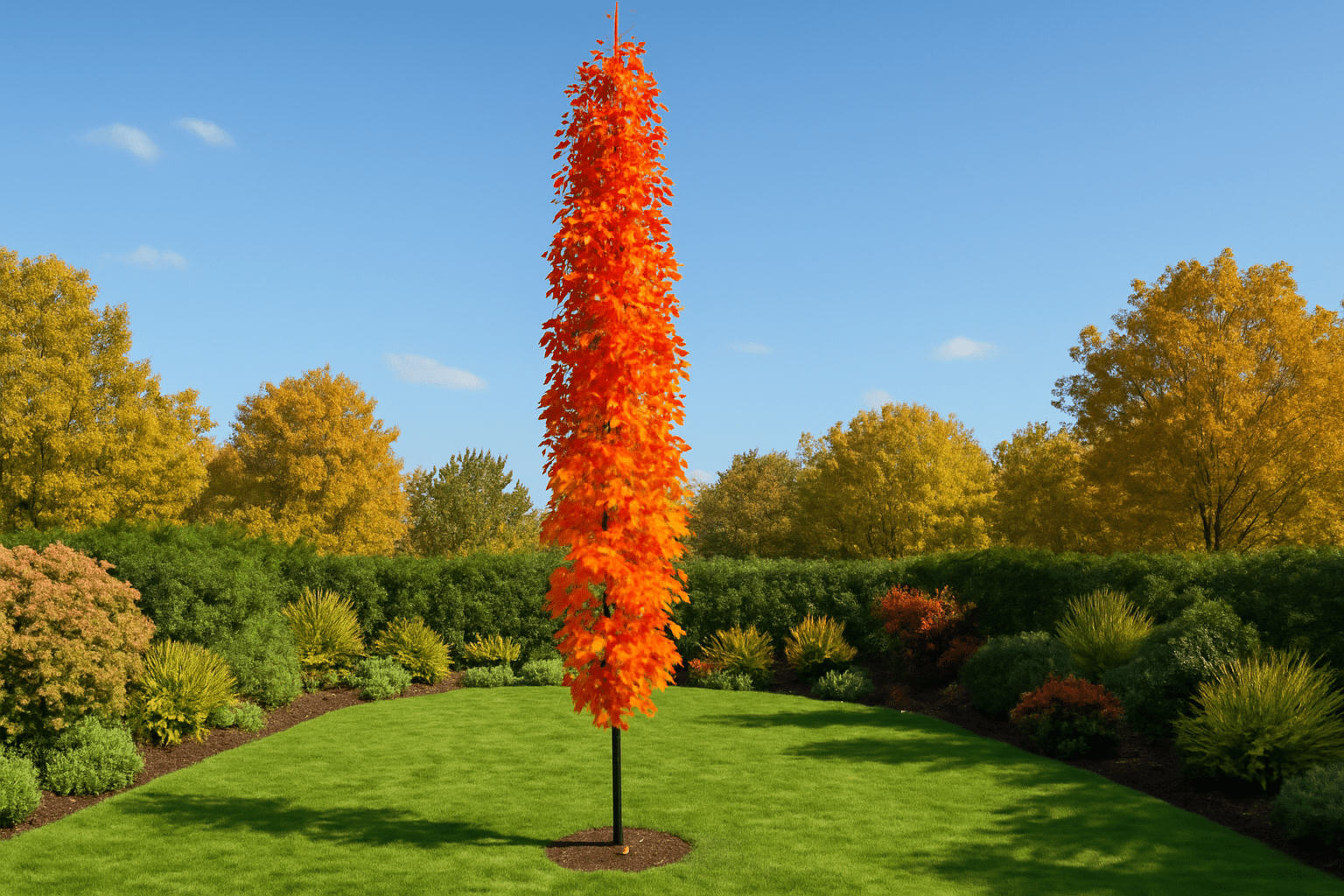
Whether you’re planting your first tree or adding to an established garden, the columnar sweetgum tree offers a rewarding and enjoyable experience. Embrace the journey, and in no time, you’ll be able to enjoy the shade, vibrant colors, and beauty it brings to your outdoor space! 🌿🍂
Happy gardening! 🌱✨
Frequently Asked Questions (FAQs)
How fast do columnar sweetgum trees grow?
Columnar sweetgum trees are fast-growing and can add 12–24 inches of height per year, depending on growing conditions. With proper care, they can reach their full height of 30-40 feet in 10-15 years, making them an excellent choice for quick garden transformation. 🌱
What is the best time of year to plant a columnar sweetgum tree?
The ideal planting times for a columnar sweetgum tree are early spring or fall. These seasons provide mild temperatures, allowing the tree to establish roots before the heat of summer or the cold of winter. 🌸🍂
How much space do I need to plant a columnar sweetgum tree?
Columnar sweetgum trees have a narrow, upright shape, but they still need plenty of space to grow. Plant trees at least 15-20 feet apart to allow for healthy root development and air circulation. 🌳✨
Why are the leaves of my columnar sweetgum tree turning yellow?
Yellowing leaves on your columnar sweetgum tree can be caused by nutrient deficiencies, especially nitrogen, or overwatering. Ensure the tree has proper drainage and consider fertilizing with a balanced, slow-release fertilizer in early spring. 🍃💧
Can columnar sweetgum trees tolerate drought?
While columnar sweetgum trees are drought-tolerant once established, they will thrive best with regular watering, especially during the first few years. Ensure deep watering to encourage strong root growth and reduce stress during dry periods. 💦🌞
How do I prune my columnar sweetgum tree?
Prune your columnar sweetgum tree in late winter or early spring, before new growth begins. Remove any dead, damaged, or diseased branches and shape the tree to maintain its narrow, columnar form. Always use clean, sharp tools to avoid harming the tree. ✂️🌿
What are the most common pests that affect columnar sweetgum trees?
Common pests include aphids and scale insects, which can damage leaves and branches. Use organic insecticidal soap to control these pests and keep your tree healthy. Regular checks for pests, especially in spring, will help catch any issues early. 🐞🌳
How can I protect my columnar sweetgum tree during the winter?
To protect your columnar sweetgum tree in cold weather, wrap the trunk with tree wraps to prevent frost cracks. Additionally, ensure the tree is watered during warmer spells, and remove heavy snow from the branches to prevent breakage. ❄️🌨️
